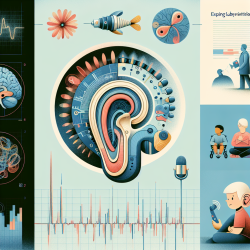Introduction
The COVID-19 pandemic forced a rapid transition from face-to-face to remote learning, presenting unique challenges for educators and students alike. The research article "COVID-19 Remote Learning Transition in Spring 2020: Class Structures, Student Perceptions, and Inequality in College Courses" by Gillis and Krull provides valuable insights into this transition. By understanding the data-driven outcomes of this research, practitioners can enhance their skills and improve educational outcomes for students.
Key Findings from the Research
The study highlights several important findings:
- Instructional Technique Implementation: The effectiveness of instructional techniques was found to be less about the specific technique used and more about how well it was implemented. For example, forums were effective when structured with clear guidelines and prompts.
- Trade-offs Between Enjoyment and Accessibility: While synchronous interactions like Zoom classes were found to be engaging, they posed accessibility challenges. Asynchronous methods, though less engaging, were more accessible to students facing technological barriers.
- Barriers to Learning: Common barriers included internet and technology access, distractions in new learning environments, and increased anxiety and stress due to the pandemic. These barriers were more pronounced for nonwhite, female, and first-generation college students.
Applying the Findings to Practice
Practitioners can leverage these findings to improve their remote teaching strategies:
- Focus on Implementation: Rather than selecting the most innovative technology, focus on how to effectively implement chosen tools. This includes providing clear instructions, setting expectations, and offering structured activities.
- Balance Synchronous and Asynchronous Methods: To maximize engagement and accessibility, consider a blended approach. Use synchronous sessions sparingly and provide asynchronous alternatives to accommodate students with varying access to technology.
- Address Barriers Proactively: Understand the potential barriers students may face and design courses with flexibility in mind. This includes offering extensions, alternative assignments, and maintaining regular communication to reduce anxiety.
Encouraging Further Research
The findings from this study underscore the need for ongoing research into remote learning. Practitioners are encouraged to explore further studies on online teaching strategies, student engagement, and the impact of educational inequalities exacerbated by remote learning.
To read the original research paper, please follow this link: COVID-19 Remote Learning Transition in Spring 2020: Class Structures, Student Perceptions, and Inequality in College Courses.










